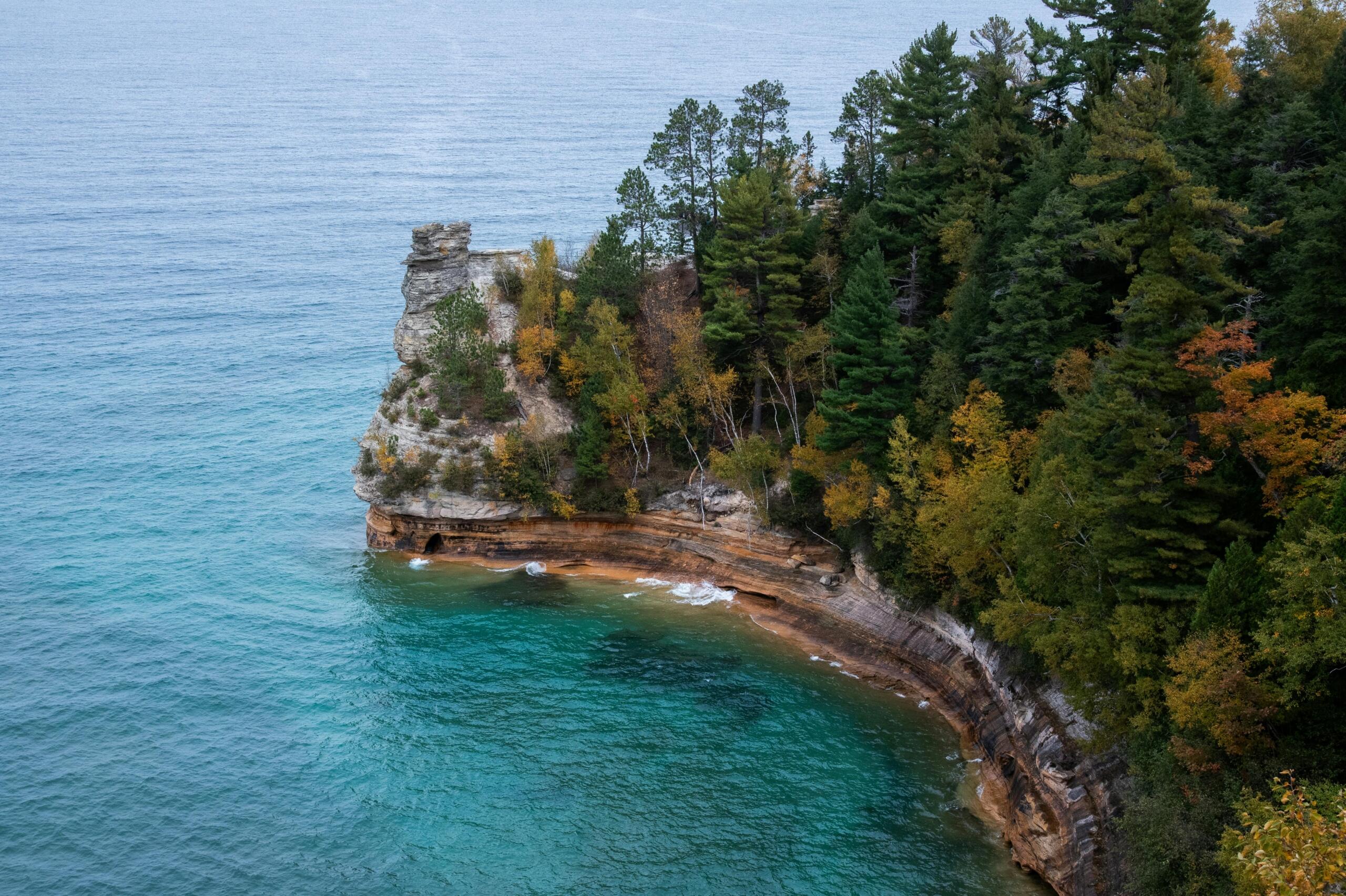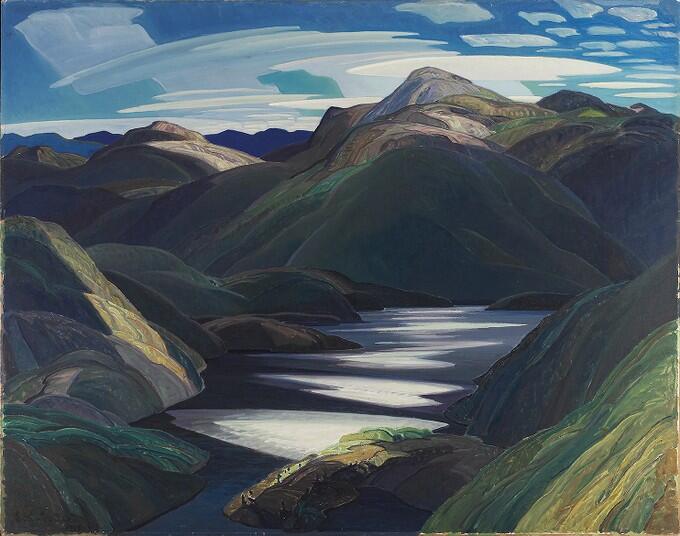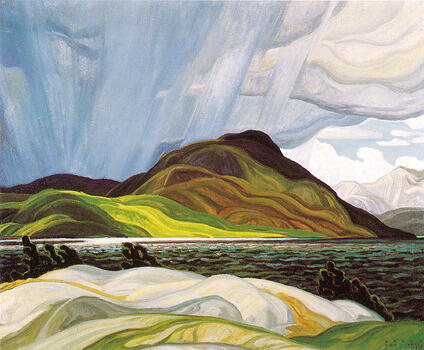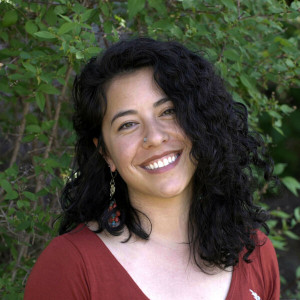Key Takeaways
- Franklin Carmichael was an artist that showed promise as a child.
- Carmichael joined the Group of Seven as an artist and designer in Toronto.
- The artwork of Franklin Carmichael is distinct from other Canadian artists with its attention to detail and lyrical quality.
- Watercolour is a unique medium that Carmichael mastered and many artists use today.
It is imperative that the artist reveal through the medium in which he is happiest, what he sees, thinks and feels about his surroundings
Franklin Carmichael
The Group of Seven is undoubtedly one of the most important artistic movements in North America, and artist Franklin Carmichael played a critical role in its formation.
Known for his unique landscape painting and appreciation for Canadian land and lakes, Carmichael's work gives us a glimpse into places that are surreal in their tranquility and raw beauty. A master of watercolour, Carmichael inspires artists and aspiring painters to find inspiration in nature and medium.
This article is all about the life and work of Franklin Carmichael, the youngest Group of Seven artist and arguably one of the most influential. We will discover the concepts and places that inform his work, and his career as an artist and educator.
Emily Carr was deeply influenced by the Group of Seven and shared their vision of capturing Canada’s natural beauty in a unique, expressive style.


The Life and Career of Franklin Carmichael
Franklin Carmichael was born on May 4, 1890 in beautiful Orillia, a town in Ontario. He showed interest in art from childhood, and worked in his father's carriage shop as a teenager decorating carriages.
He chose to pursue painting and design in Toronto at the Ontario College of Art (now Ontario College of Art and Design, or OCAD). Alongside other Group of Seven members, such as J.E.H. MacDonald and Tom Thomson, Carmichael worked at Grip Ltd. Design firm.
Carmichael spent a year studying art in Antwerp, Belgium, and returned to Ontario at the start of World War 1. He reconnected with his future Group of Seven artist friends, and they struggled in wartime Canada. Carmichael lived in the Group's famed Studio Building and even shared a living space with Tom Thomson.

Group of Seven
1920 marked the formation of the Group of Seven, and Carmichael counted himself among this group of creative elites. They chose to develop a uniquely Canadian style of painting, capturing the Canadian wilderness and turning away from European traditions.
Unlike other Group of Seven painters, Carmichael's work had a more refined quality. True to his birthplace, he fondly painted the hills and forests of Ontario in the La Cloche Mountains and Georgian Bay area.
Carmichael was the youngest member of the Group of Seven, and reportedly remained on the fringes of the group. Like his coterie, Carmichael was deeply fascinated with theosophy, a spiritual philosophy that believed in the pervasiveness of divinity. Carmichael was a strong proponent of theosophy, and sought to represent spirituality in his work.
Lawren Harris’ work evolved from representational landscapes to abstract compositions, influenced by spiritual and modernist ideals.
After the Group of Seven
In 1925, Carmichael teamed up with A.J. Casson and F.H. Brigden to found the Canadian Society of Painters in Water Color. In 1933, he formed the Canadian Group of Painters, many members of which were part of the Group of Seven.
He also worked as an educator, teaching at the Ontario College of Art from 1932-1945 as Head of Graphic and Commercial Art.
Carmichael deeply loved Canada's natural landscape, and became one of the country's top watercolour painters despite having started in oil painting. Through watercolours, he was able to skilfully depict light, atmosphere, and texture.
Franklin Carmichael Artwork Career Highlights
1911
Early Studies
Carmichael moves to Toronto to study at Ontario College of Art and works at a commercial design firm, Grip Ltd.
1913
Meeting Group of Seven
Meets future Group of Seven members, including Lawren Harris and J.E.H. MacDonald, and starts painting landscapes.
1920
Founding of Group of Seven
Becomes a founding member of the Group of Seven, defining a uniquely Canadian painting style.
1925
Northern Ontario
Moves to the northern Ontario town of Espanola, where he paints dramatic landscapes of the La Cloche Mountains.
1933
Ontario College of Art
Becomes head of the Graphic Design and Commercial Art Department at the Ontario College of Art.
1930s-1940s
Watercolour Painting
Carmichael focuses on watercolors, refining a softer, more detailed landscape style.
What is the Meaning of Mirror Lake Franklin Carmichael?
Carmichael is perhaps most known for his painting "Mirror Lake" which reflected his deep connection to Canada's landscape. Let's take a look at the main themes of the painting. Check out this quick overview of the painting.
"Mirror Lake" contains symbolism in its depiction of hills and lake. The surface of the lake is a mirror, perhaps representing introspection and reflection. The gentle blues, greens, and earth tones make the painting feel dreamy, reminding one that nature is a sanctuary. Perhaps most significantly, the painting explores the Canadian wilderness, marvelling in its majestic qualities.

What are the Key Characteristics of Carmichael's Work?
Mastery of Watercolours: Carmichael excelled in watercolour, creating vibrant works that were also delicate.
Lyrical Composition: Paintings feature flowing, rhythmic lines that convey movement and harmony.
Soft and Vivid Colours: Carmichael used a sophisticated range of colours, such as soft pastels and striking contrasts.
Intricate Detail: Paintings demonstrate careful attention to detail, such as changing light conditions.
Canadian Identity: Carmichael's paintings show a deep connection to Canada's physical landscape, capturing its rugged, serene expanses.
Tom Thomson’s paintings, such as "The Jack Pine" and "The West Wind," captured the wild beauty of the Canadian landscape with bold colors and expressive brushstrokes.

Most Famous Franklin Carmichael Paintings
Where Can I Find Franklin Carmichael Prints?
While purchasing an original Group of Seven painting is out of most people's budgets, finding a great print of a painting you love, like Mirror Lake, is inexpensive and will add beauty to your home. There are many great online art stores that will enable you to have a copy of your favourite Carmichael artwork.
- Great Big Canvas
- Etsy
- Art Country Canada
- McMichael Gallery Shop
- Canadian Art Prints and Winn-Devon Art Groups
- Group of Seven Art
Be sure to measure the space you would like to place your print, and check out framing options for a finished look.

Northern Canada is filled with beauty that captivated members of the Group of Seven. Source: Jon M.
What Makes Watercolour Painting so Unique?
Watercolour painting may bring to mind the simple palettes you'd bring to school as a child, but the truth is that it is a medium that can produce incredible results. Carmichael was a master of watercolour painting, and his work is known for its masterful application.
What makes watercolor so special? First of all, it is a transparent medium that has a spontaneous and fluid quality. It can be layered to create depth and a wide range of effects, and can be blended. Watercolors dry quickly, meaning you can finish a painting quickly - unlike oil paintings, which can take months to dry.
Canadian art is deeply influenced by the country’s vast and diverse landscapes, from rugged mountains to serene lakes.
How Can I Learn More About Landscape Painting?
Landscape painting is no easy feat to master, and while you certainly can do the research independently it can make a big difference to learn from an experienced artist. While the idea of finding a private tutor can seem daunting and expensive, it doesn't have to be with Superprof Canada.
Superprof Canada connects students with private tutors and instructors across a wide range of subjects, including art and art history. You can hire a tutor to help you learn how to paint in the style of Franklin Carmichael, or find someone who can help you navigate the curriculum and expectations of a fine arts degree.
Find a private tutor that is right for you on Superprof today!















